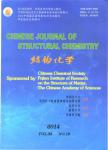3D-QSAR Studies on the Imidazopyrimidine Derivatives
3D-QSAR Studies on the Imidazopyrimidine Derivatives作者机构:Shaanxi Key Laboratory of Chemical Additives for IndustryShaanxi University of Science and TechnologyXi'an 710021China
出 版 物:《Chinese Journal of Structural Chemistry》 (结构化学(英文))
年 卷 期:2020年第39卷第11期
页 面:1985-1989页
核心收录:
学科分类:090403[农学-农药学(可授农学、理学学位)] 09[农学] 0904[农学-植物保护] 0703[理学-化学]
基 金:Supported by the National Natural Science Foundation of China (21475081) Natural Science Foundation of Shaanxi Province (2015JM2057) Graduate Innovation Fund of Shaanxi University of Science and Technology
主 题:3D-QSAR comparative molecular force field analysis molecular design
摘 要:Comparative molecular field analysis(CoMFA) and comparative molecular similarity indices analysis(CoMSIA) for imidazopyrimidine derivatives were performed to get the molecular active conformation selection, molecular alignment, as well as the establishment of corresponding 3 D-QSAR model. The model established by this method has good ability to predict such compounds. For CoMFA model, the cross-validated q2 and non-cross-validated r2 values are 0.665 and 0.872, respectively. The best q2 value for CoMSIA model is 0.632 and r2 value is 0.923. Using this information and the three-dimensional equipotential map for molecular design can theoretically obtain some new antibacterial drugs with higher activity. There are two newly designed molecules with activity values of 7.921 and 7.872, which are higher than that of the template molecule No. 12 with an activity value of 7.850, and the QSAR research results can provide a theoretical reference for the synthesis of new drugs.



